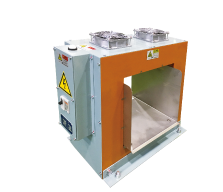Size & weight reductions coupled with higher efficiencies and better output for the drive motors at the heart of EVs will be the key for their further commercialization.
In order for a motor to meet the strict technical requirements of EVs, the characteristics of the "magnet," a part that determines performance, must be maximized (Photo 1). Since the magnetic materials from which the magnets are to be produced are not magnetized to begin with, they must be magnetized by magnetizers capable of applying a strong magnetic field.
NDK provides magnetizers and other peripheral equipment which are indispensable for motor-related products of automotive parts (Figure 1). NDK is also actively working to address the new challenges related to magnetization of the EV age, such as higher magnet performance and more complex magnet layouts to offer higher motor performance and improved products.






































